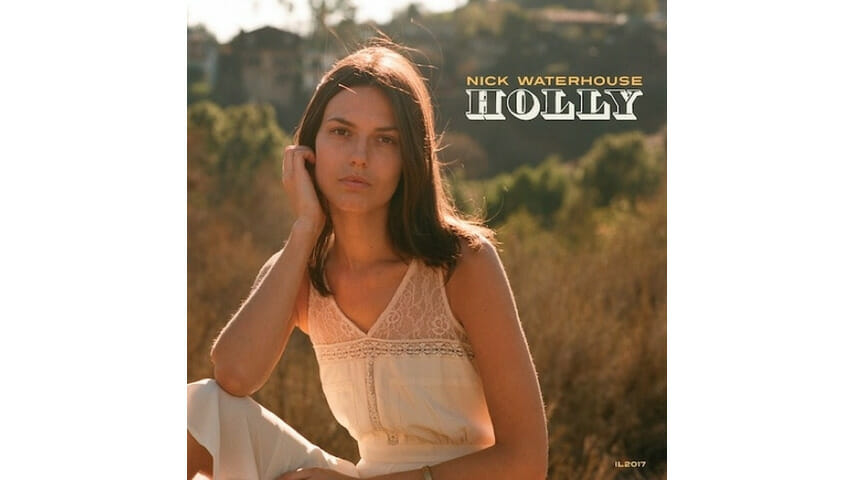
Don’t be fooled by the horns: Though Nick Waterhouse is often lumped in with soul revivalists like Sharon Jones, the Los Angeles singer, songwriter and guitarist would be the first to tell you that’s not his scene. He’s got soul, to be sure, but really, Waterhouse is a rocker at heart—one whose music just happens to reflect his appreciation for vintage R&B without fully falling back on it.
In fact, the singer has more in common on his latest with the jumped-up rock ’n’ roll of, say, JD McPherson, who plays a throwback musical style with modern panache. Waterhouse takes a similar approach on Holly, the follow-up to his 2012 debut LP Time’s All Gone. He hones a hard-edged sound here on 10 tracks full of nimble guitar licks, taut melodies and precise rhythm: sharp stabs of guitar punctuate opener “High Tiding,” bold horns swing over swirls of juke-joint piano on the title track and drums anchor muted jazzy guitar comping on “Well It’s Fine.”
Waterhouse sings in a clear, expressive voice, though there’s an enigmatic, almost buttoned-up quality about him—he conveys a certain lack of sentimentality that matches the hard-boiled noirish theme of the album. Holly is not quite a concept record, but the songs tell a story of sorts rooted in the “young L.A.” scenesters chasing glamour in haunts east of downtown. Waterhouse approaches many of the songs with an air of keen-eyed detachment: his narrator is in the scene but not of it, and he has an omniscient bird’s-eye view of the action as he dispenses cautionary advice on “This Is a Game” and hints on “Sleepin’ Pills” at the portent of a dark dream, accompanied by a trebly, rolling guitar part with polyrhythmic percussion and lush backing vocals.
Along with seven originals, Waterhouse fleshes out Holly with covers of tunes by the jazz singer Mose Allison, drummer Isaac “Red” Holt and garage-rocker Ty Segall—selections that demonstrate the bounds of Waterhouse’s wide-ranging taste and his ability to reimagine songs to fit his own musical vision. Segall’s clattering, fuzzed-over “It No. 3” becomes sleek and slightly foreboding in Waterhouse’s hands, while Allison’s “Let It Come Down” transforms from the lurching, scattershot original into a moody tune with glimmers of tremolo guitar, full-throated backing vocals and low horns.
Waterhouse has said that the movie Chinatown was among his primary influences for Holly, and it shows. The singer has crafted an album that unfolds like a film: it’s brisk, self-contained and a little mysterious, and catchy enough to revisit again and again.